All about Pumpkin Flowers
The pumpkin plant is a kind of squash plant. Pumpkin flowers have a yellow and orange hue. Also, these edible flowers are pretty and small in appearance. Many popular dishes around the world, particularly in southwest Asia, have pumpkin flowers as their ingredients.
This article focuses on pumpkin flowers, their appearance, pollination, and their uses.
Generally, pumpkin plants are monoecious plants. This simply means, they produce both female and male blooms on their elongated vines. Normally, the male blooms appear a couple of weeks before the female blooms. As a matter of fact, only female blooms develop fruit. The insects, mostly bees facilitate the pollination process.
Table of Contents
Pumpkin Flowers
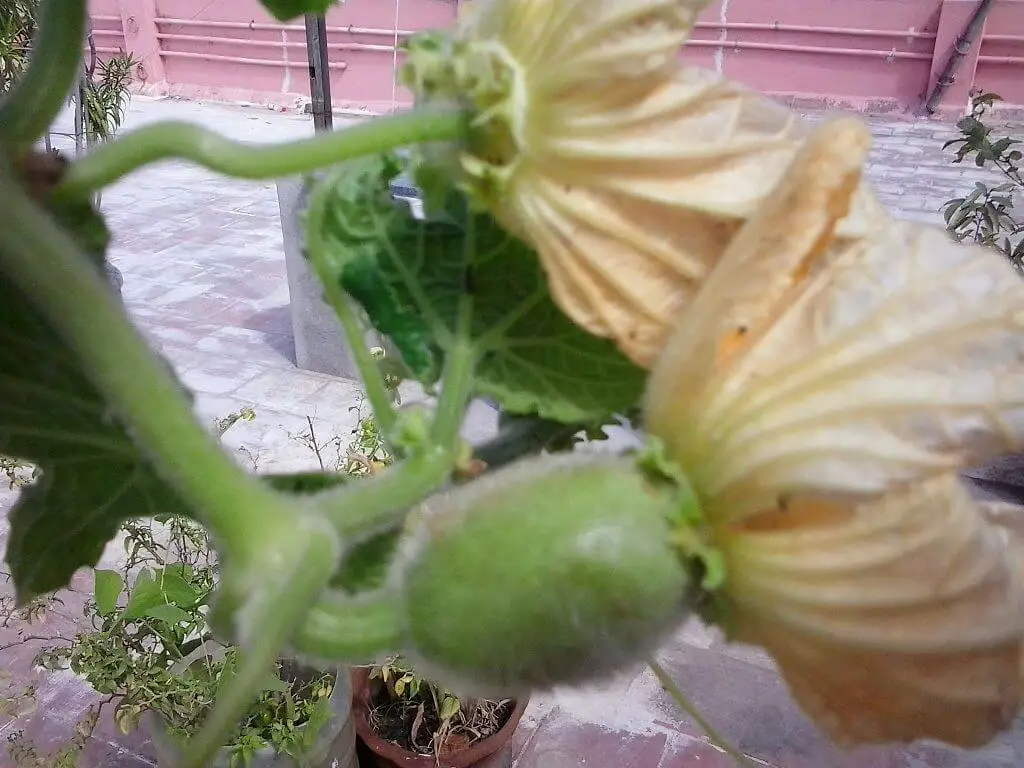
Photo by Mad.madrasi (Wikimedia Commons) (CC BY-SA 3.0)
Like most of the other plants, Pumpkin plants need both female and male flowers to pollinate.
Usually, the male blooms outnumber the female blooms by large numbers. Sadly, most male blooms die early. The remaining male blooms attract pollinators (usually bees, birds, moths, bats, Etc.,).
These pollinators transport pollen from male blooms to female blooms. However, there are many factors that decide the pollination success ratio.
Male Pumpkin Flowers
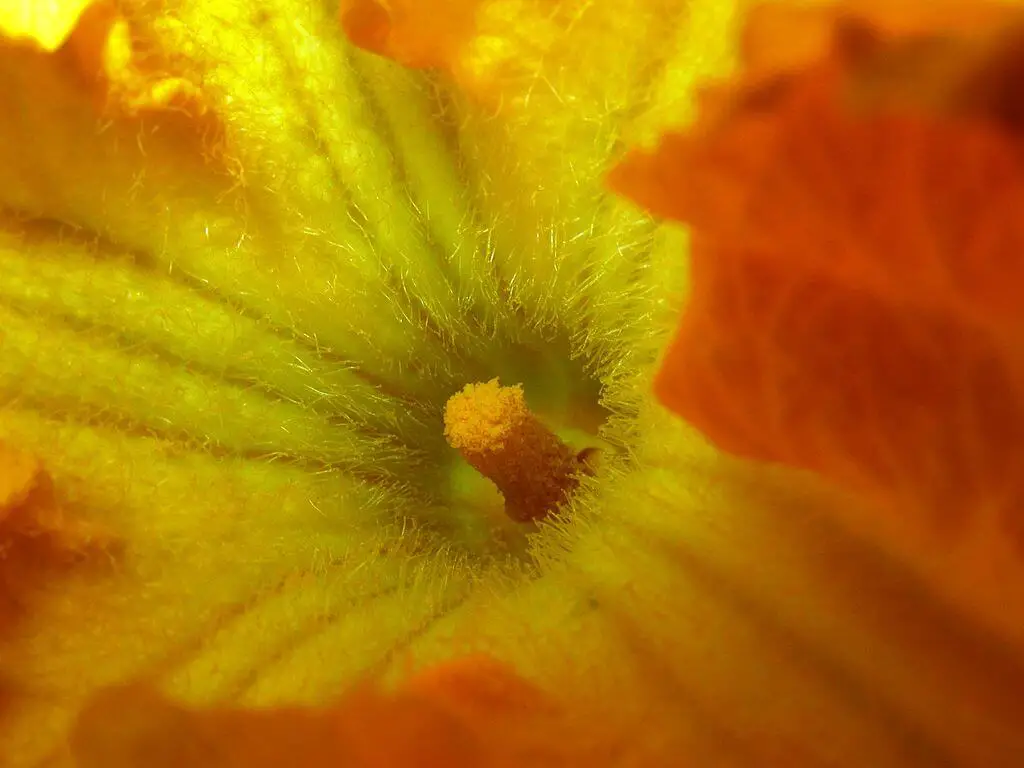
Photo by Eli Shany (Wikimedia Commons) (CC BY-SA 4.0)
Normally, the male blooms sprout out within a couple of months after germination.
The male flower is usually yellow or orange in color. It appears in the shape of a star. Many stems sprout out of the vines. Almost every stem carries a flower. You can find pollen covering the stamen fully inside the male bloom. These pollens fertilize the female bloom.
Female Pumpkin Flowers
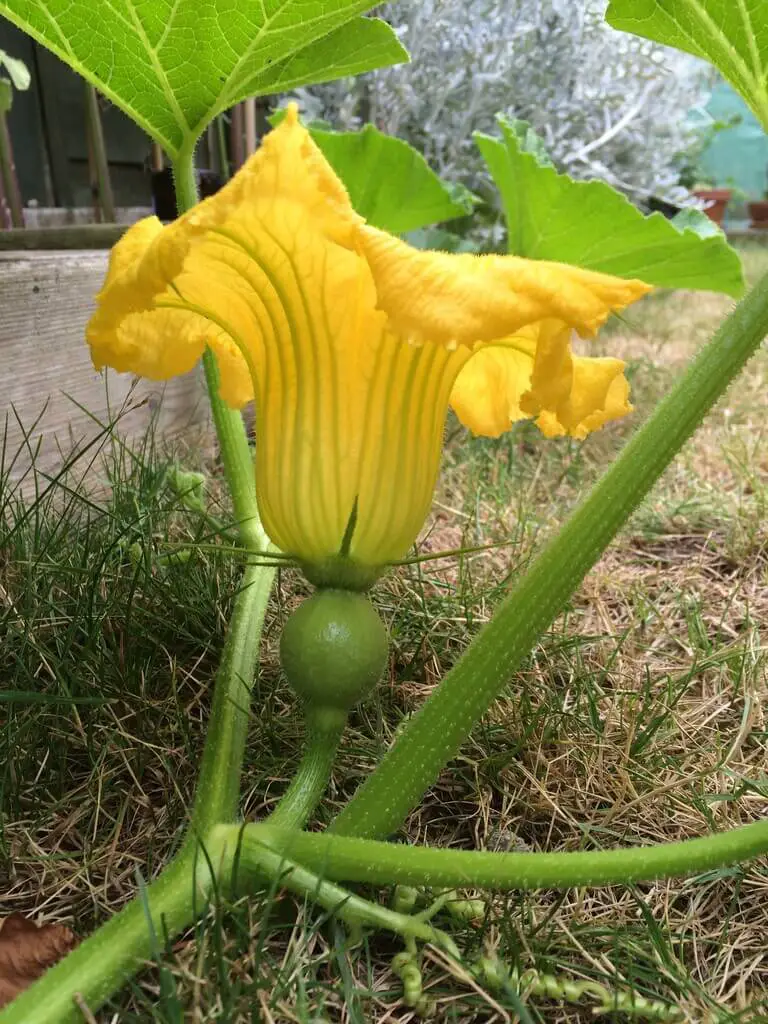
Usually, the female blooms begin to develop a couple of weeks after the male blooms.
The female flowers look almost similar to the male flowers outwards. But it does not grow as tall as the male bloom. You can find stigma (yellow center) at the center of the female bloom. It also has a small lump at the bottom. Upon successful pollination, this lump develops into pumpkin fruit.
Pollination
Naturally, the insects (usually bees) transport pollen from male bloom to female bloom. To attract these pollinator insects, grow bee-friendly trees near pumpkins. Some of the bee-friendly trees include Sunflower, Cosmos, Lavender, Coneflower (Echinacea), Bee Balm, Etc.,
Hand Pollination
Generally, the pollinator insects roam around searching for the stamens and pollens in nature. Most likely, they will find their way to your garden. Growing plants that attract bees can help accelerate attracting these bees and other beneficial insects.
However, if your garden does not have a bee-friendly environment, it may receive fewer or no visiting pollinators. Therefore, you may have to use artificial pollination methods like hand pollination. In fact, hand pollination is an easy process. It is not as difficult as some people think.
Be sure to wear good-quality garden gloves to protect yourself from prickly vines. Using a good cotton swab, gently brush the pollen from the stamen (male blooms) and collect the pollen.
After that, drop the pollen into the stigma (female blooms) and gently press inwards.
You can find the female bloom closing up and developing the green lump underneath larger and larger. Finally, this lump transforms into pumpkin fruit.
Always use good-quality garden gear for any garden-related activity.
Factors That Impact Blooming
Normally, you can expect germination within a couple of weeks after sowing seeds. Then, you can see male blooms within a couple of months. After that, you can expect female flowers in a couple of weeks.
Also beware, the male flowers live for a short time (Almost a day). In the morning, they open up, and, in the evening, they may turn into shriveled stumps.
However, there are some factors that may delay blooming. They are as discussed below:
Soil
If you cannot see pumpkin flowers growing even after 2 months, the soil may have high nitrogen content. Generally, the nitrogen content encourages the leaves’ production. But it does not support fruit production.
Try planting corn near the pumpkin. The corn intakes most nitrogen content from the soil. However, the pumpkins too require a little bit of nitrogen to grow healthy. So, do not try to eradicate nitrogen as a whole from the soil.
The other reason may be, the plants are deprived of Phosphorus. Phosphorus helps plants to set fruits. it is also an integral part of the flowering process.
Amend the soil with 5-10-10 NPK fertilizer. This helps the soil to have more potassium and phosphorus than nitrogen.
Alternatively, you can amend the soil with the bone meal (3-15-0 NPK), if you suspect a lack of phosphorus only, in the soil. This also has the advantage of being a non-chemical fertilizer.
Sunlight
The pumpkin plants love to grow under the sun. They need at least 6 – 8 hours of sunlight every day. If they are deprived of sunlight, they may grow leggy and weak. They also may not bloom pumpkin flowers enough and fertilize enough.
It is advisable to keep a watch on the duration of sunlight that falls on the pumpkin plants. If the duration is not adequate, consider transplanting them to a new sunny location carefully.
Hot Climate
These plants love the sun. But hate heat. If the daytime temperatures consistently rise above 90-degree Fahrenheit, the plants feel stressed. They may drop immature buds. As a result, they stop blooming and turn to survival mode.
If you encounter such conditions, increase the frequency of watering. Cover the plan surroundings with light color straw mulch. This helps to deflect heat to some extent.
You can also try shading plants with garden hoops during hot sunny times, particularly in the afternoons.
Fungal Infection (Powdery mildew)
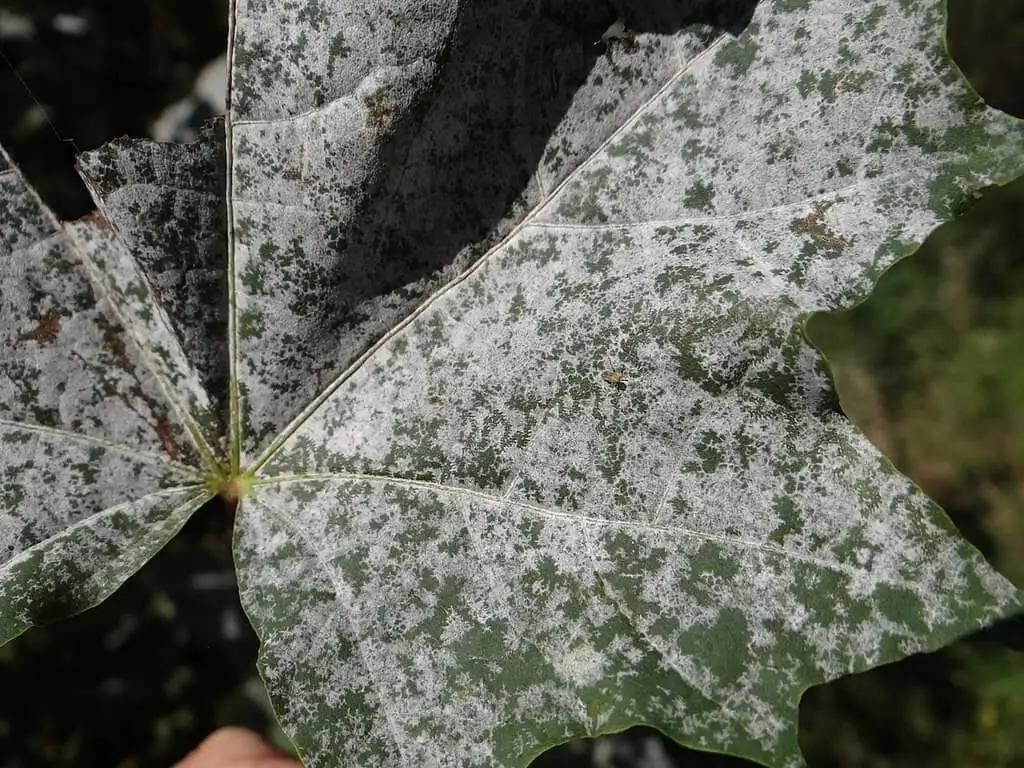
Photo by Jerzy Opioła (Wikimedia Commons) (CC BY-SA 4.0)
The Pumpkin plants are vulnerable to a common fungal disease called Powdery mildew. This disease can have adverse effects on the health of the plants. As a result, the plants may delay blooming, or even die!
Generally, the affected leaves have white powdery stuff formed on them. Remove those leaves immediately and treat the plants with an organic fungicide.
Be aware that there are different types of fungicides. You can use some of them as a precautionary measure for safeguarding the plants against fungal diseases. Other types are effective for treating fungal diseases. Also, some specific types can be used to perform both functions.
If you are living in rainy and moist areas, it is advisable to apply preventative type fungicide on young plants.
During harvest, make sure to wash your hands at regular short intervals. If you happen to touch or remove the affected foliage, washing hands becomes mandatory before continuing the work.
Otherwise, you will transmit the fungus spores and spread the disease to other healthy parts of the plant.
Avoid overhead watering of plants. Ensure there is ample air airflow around the plants. Inspect the plants regularly for disease symptoms and take necessary actions as described above.
In this way, you can expect to grow healthy pumpkin plants that produce healthy fruits.
Uses of Pumpkin Flowers
Health Benefits
Pumpkin flowers are rich in vitamin B9. They have numerous medical benefits including – enhancing immunity in the human body, treating the common cold, making bones stronger, and improving eye vision.
They serve the fertility industry by assisting various infertility issues, improving sperm quality in males, and also in many other fertility-related applications.
Food
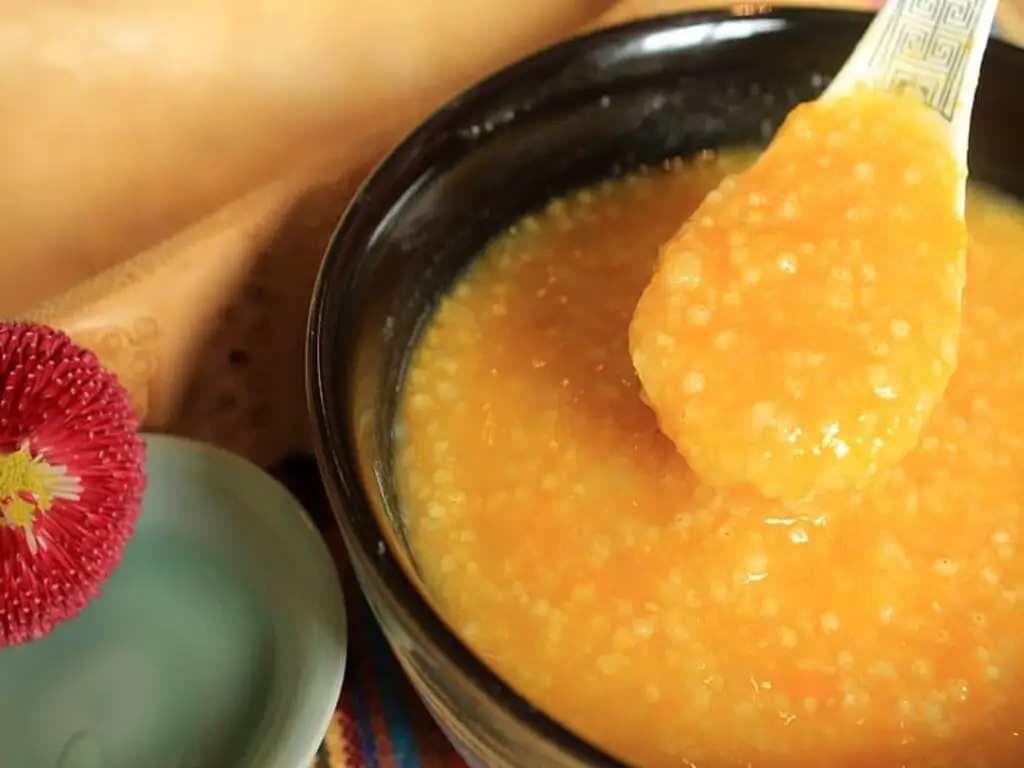
The pumpkin flowers have a mild sweet flavor. Many consumers around the world, particularly in southeast Asia, use them for cooking various delicacies. You can readily use them as condiments and also for flavoring soups.
Commonly, consumers use it to prepare delicious salads, soups, and burgers. You can also use them as cross dressings for cold salads and other foods.
Mostly, male pumpkin flowers are used for cooking. It is because the female flowers are left to develop the fruits.
Top Posts
How to Grow Perennial Kale in Garden
How to Grow Mortgage Lifter Tomatoes

